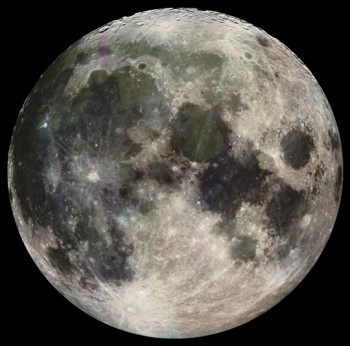Looking at our own world or up at the moon, we may think that we’re looking at a celestial body that’s as old as the solar system itself.
That is what scientists have thought for years.
The common estimate of the moon’s age is 4.5 billion years old, which was determined by mineralogy and chemical analysis of moon rocks gathered during the Apollo missions in the late 1960s to early 1970s.
But, hold on a minute.
Newly released research suggests Earth may in fact be millions of years younger than originally thought.
Scientists determined this by using a technique which measures the isotopes of lead and neodymium in lunar crustal rocks.
Chemist Lars Borg with the Lawrence Livermore National Laboratory, along with a team of international collaborators, analyzed three isotopic systems, including the elements found in ancient lunar rocks.
From their analysis, Dr. Borg and his team determined that the moon could be much younger than originally estimated. In fact, according to their studies, its age may be 4.36 billion years old.
The study team says this research can not only change what we think of the creation of the moon, but could also have implications for the age of Earth as well.
Scientists believe the moon formed from a giant impact into the Earth and then solidified from an ocean of magma.
According to Dr. Borg, if their analysis correctly represents the moon’s age, then the Earth must be fairly young, too.
The researchers contrast their findings to a planet like Mars, which scientists believe formed approximately 4.53 billion years ago.
If the team is right about the moon’s age – and if the data they examined was taken from one of the first-formed lunar rocks – then that makes the moon about 165 million years younger than Mars and about 200 million years younger than large asteroids.
The isotopes they measured were taken from samples of type of rock from the crust of the moon, considered to be the oldest of its type, called ferroan anorthosite.
Dr. Borg says the moon most likely solidified much later than most previous estimates or that a long-held belief concerning the origin of the rocks studied is incorrect.
Common belief says that the moon is supposed to be old and have a lunar magma ocean, but the measurements and analysis performed by Dr. Borg’s team shows that the moon is young and did not have a magma ocean.
This weekend on the “Science World” radio program, Dr. Borg talks about his team’s research and their findings and tells us about the origins of our moon.
>>>> Listen to the interview here…
[audio://blogs.voanews.com/science-world/files/2011/08/One-On-One-Dr.-Lars-Borg-Just-How-Old-Is-The-Moon.mp3|titles=One On One Dr. Lars Borg – Just How Old Is The Moon]Other stories we cover on the “Science World” radio program this week include:
- WHO: mobile phones may give you cancer
- Underground river discovered flowing under the Amazon
- Two new observation satellites boost Nigerian space program
- Apple’s visionary co-founder Steve Jobs resigns
- People power runs portable electronic devices






















Comments are closed.